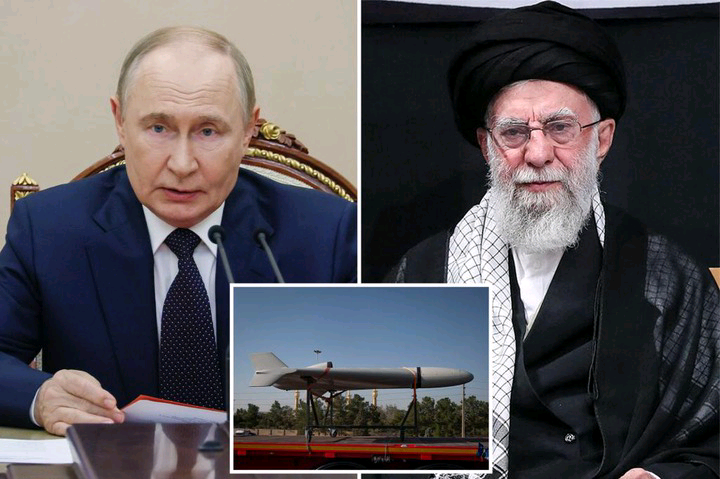Growing Tensions Between Russia and Iran Over $1.75 Billion Drone Deal and Lack of Support

A significant rift has developed between Russia and Iran, two countries traditionally seen as allies, stemming from dissatisfaction on Tehran’s part regarding Moscow’s limited support amid escalating regional conflicts and the ongoing war in Ukraine. This tension centers on a $1.75 billion arms agreement signed in 2023, which granted Russia access to Iranian drone technology, particularly the Shahed series of kamikaze drones, for local production.
The 2023 deal was initially described as a “covert partnership” designed to bolster Russia’s military capabilities by enabling it to manufacture Iranian-designed unmanned aerial vehicles (UAVs). These Shahed drones have played a crucial role in Moscow’s military operations during its full-scale invasion of Ukraine that began in February 2022. By acquiring drone designs from Iran, Russia aimed to enhance its drone fleet to offset challenges faced on the battlefield.
“Beat the Pressure: A Comprehensive Guide to Lowering Blood Pressure Naturally.”
Buy book from Gumroad or Paystack
However, recent developments reveal growing frustrations in Tehran. According to sources cited by Western intelligence agencies and reported by CNN, Iran expected more substantial military backing from Russia during critical moments, especially during the 12-day conflict between Iran and Israel in June 2025. Tehran anticipated Moscow’s direct military intervention or at least robust support to counter Israeli airstrikes targeting Iranian assets.
Instead, Russia’s response was restrained, limited to diplomatic condemnation of Israeli strikes and offers to mediate talks, falling short of Iran’s expectations for tangible military assistance. This limited support left Iran exposed to Israeli air campaigns that inflicted significant damage, including strikes on key nuclear facilities and the assassination of over 30 Iranian commanders, among them at least 11 leading nuclear scientists. The severity of these attacks reportedly forced Iran’s Supreme Leader Ayatollah Ali Khamenei into hiding, underscoring the vulnerability of Tehran in this conflict.
Western intelligence officials have described Russia’s position as “purely transactional and utilitarian,” indicating that Moscow engages only when its direct interests are at stake, and does not extend support beyond these confines—even when a valued partner, such as Iran, faces severe attacks.
Further complicating the relationship, Russia has reportedly taken Iran’s original Shahed drone designs and developed enhanced, more cost-effective versions without adequate communication or profit-sharing with Tehran. While Iranian Shahed drones cost approximately $200,000 each, Russian variants are manufactured at roughly $70,000 apiece. These Russian-produced drones reportedly boast improved lethality and greater resilience against being shot down, according to Ukrainian sources monitoring the conflict.
Sanctions imposed on Russia by the West have complicated financial transactions related to the drone deal, leaving the exact amount Moscow has paid Iran unclear. Satellite imagery analysis indicates that up to 90% of Shahed drone production now occurs within Russia, with the largest manufacturing facility located in Alabuga, around 600 miles east of Moscow, continuing to expand rapidly.
This evolving dynamic between Russia and Iran highlights a shifting geopolitical landscape where former strategic partnerships are tested by competing interests and unmet expectations. Tehran’s growing dissatisfaction with Moscow’s limited military support and Russia’s unilateral adaptation of Iranian technology signal potential strains that could reshape alliances and influence regional security calculations in the Middle East and beyond.
💔 “She said she loved me. And for fifty-two years, I believed her.” 💔
Buy The Book "The Longest Lie: A Husband’s Journey Through Love, Betrayal, and Redemption" From Gumroad






